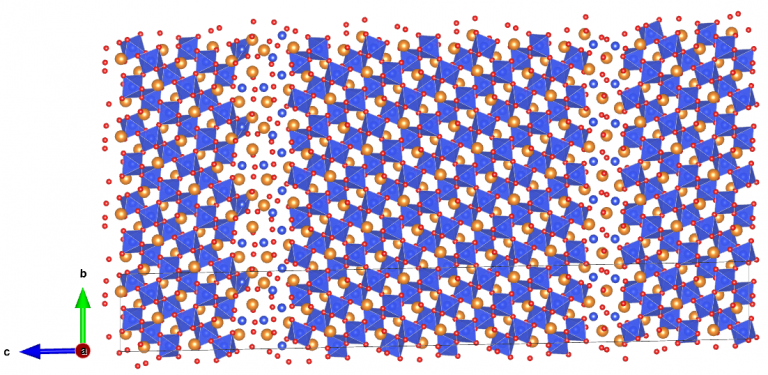Using computational techniques to understand grain boundaries
9 January 2018
Jac van Driel, PhD student describes his research project.

Grain boundaries represent the most significant inter-connected defect structure on our planet. As a PhD student here at UCL I am using computational techniques such as density functional theory and pair potential molecular dynamics to understand their behaviour at extreme conditions. The study of grain boundaries using computational techniques is impeded due to limitations in the number of atoms we can model, however, in spite of this, we have already found interesting results from both a material science and a geophysical perspective.
Our recent work on MgO Periclase suggests that the process known as shear couple migration is highly pressure dependent with implications for both mantle attenuation and the nucleation of dislocation loops. The mechanism’s sensitivity to pressure is fundamentally governed by the transition in the ground state, and secondly by difference in the free energy of the ground state and the activated state. At low pressures the difference between the ground state, a boundary with large volumes and the activate state is significant. However, at pressures between 40-90Gpa, as ground state forms a denser structure with glide plane symmetry, here the difference between the ground and the activated state is much less, producing this ‘superplastic’ regime. At pressures over 100 GPa, the energy difference increases again, as the ground boundaries starts to form dislocations parallel to the plane causing a significant energy barrier to overcome.
We are also investigating the most common grain boundary on planet, namely MgSiO3 Bridgemanite grain boundaries and their susceptibility for hydrogen partitioning at mantle conditions. We first generate hundreds of grain boundaries in order to give us a large enough statistical sample, this is done in collaboration with the Material Science Department at the University of Cambridge. Before calculating the free energy difference between hydrogen atoms situated on the grain boundary compared to the interior of the grain. In the few grain boundaries we have studied, we have found the hydrogen does indeed partition strongly onto the grain boundary.
 Close
Close

